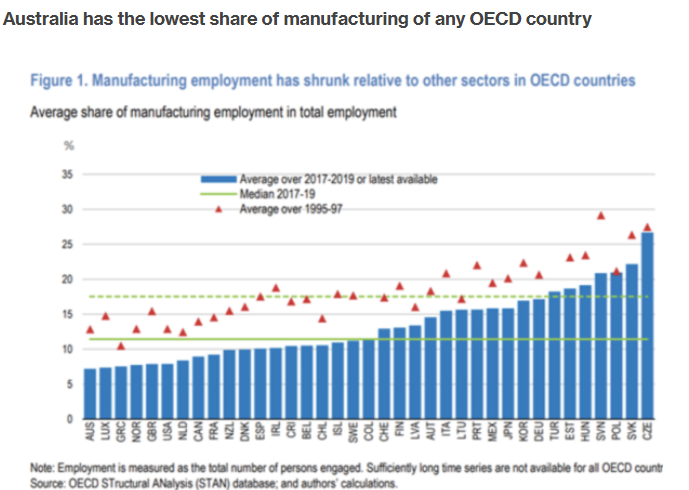Last week, CBA published the following chart showing the detachment of Australia’s job growth from the nation’s GDP.

CBA’s head of Australian economics, Gareth Aird, described the result as “a very unusual dynamic”.
“Okun’s law, which is an empirically observed relationship between unemployment and GDP, is not in play at the moment. And most economists are having a rough time trying to model and forecast the unemployment rate”, Aird said.
Alex Joiner, head of Australian economics at CBA, published the following chart showing that the relationship is in play concerning the market sector.
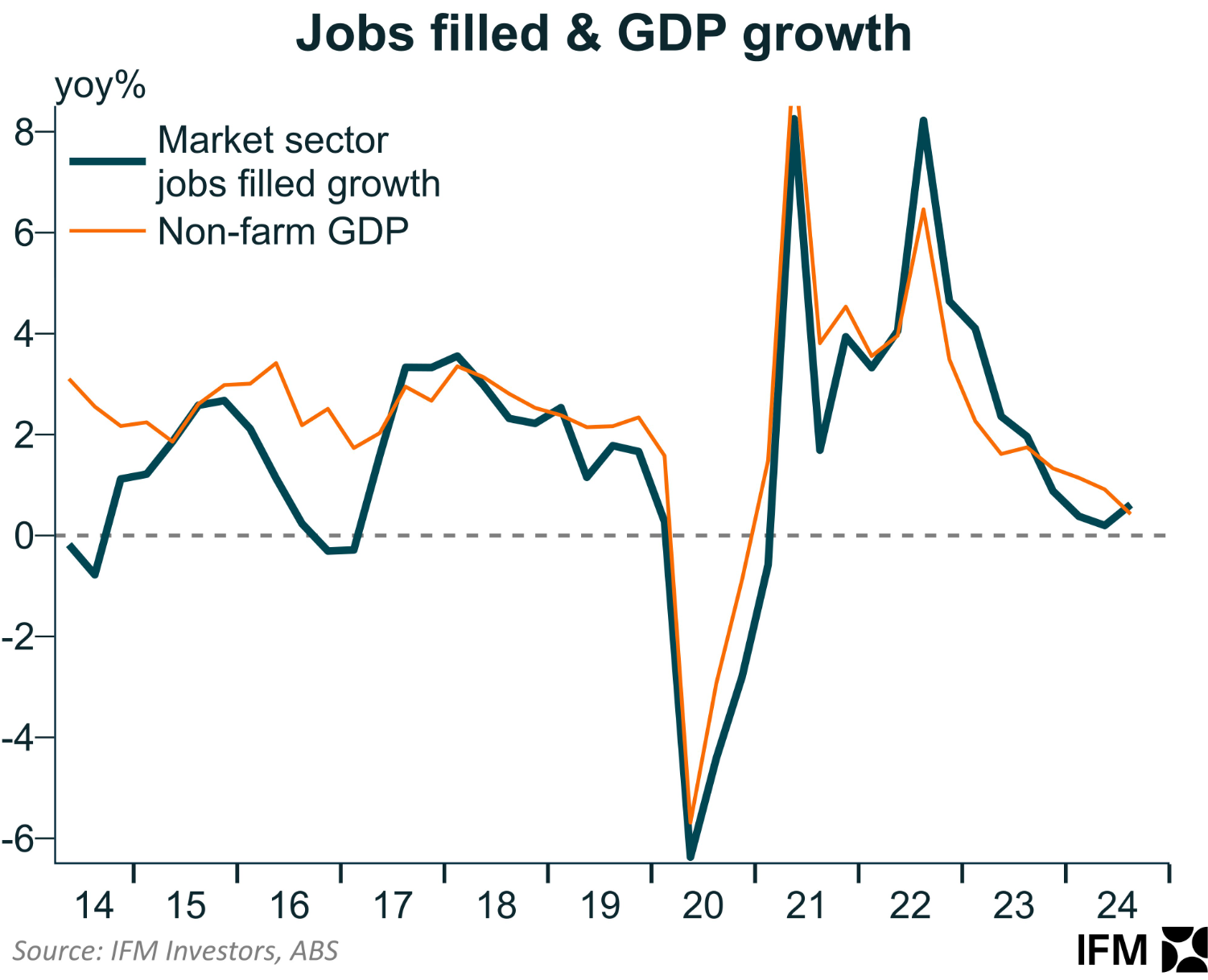
As you can see, filled market sector jobs have closely tracked non-farm GDP.
Therefore, the breakdown in the relationship between unemployment and GDP relates to the explosion in non-market (government-aligned) jobs.
Alex Joiner shows there has been near-zero market sector job growth since the end of 2022. By contrast, non-market jobs have risen by more than 15% over the same period.
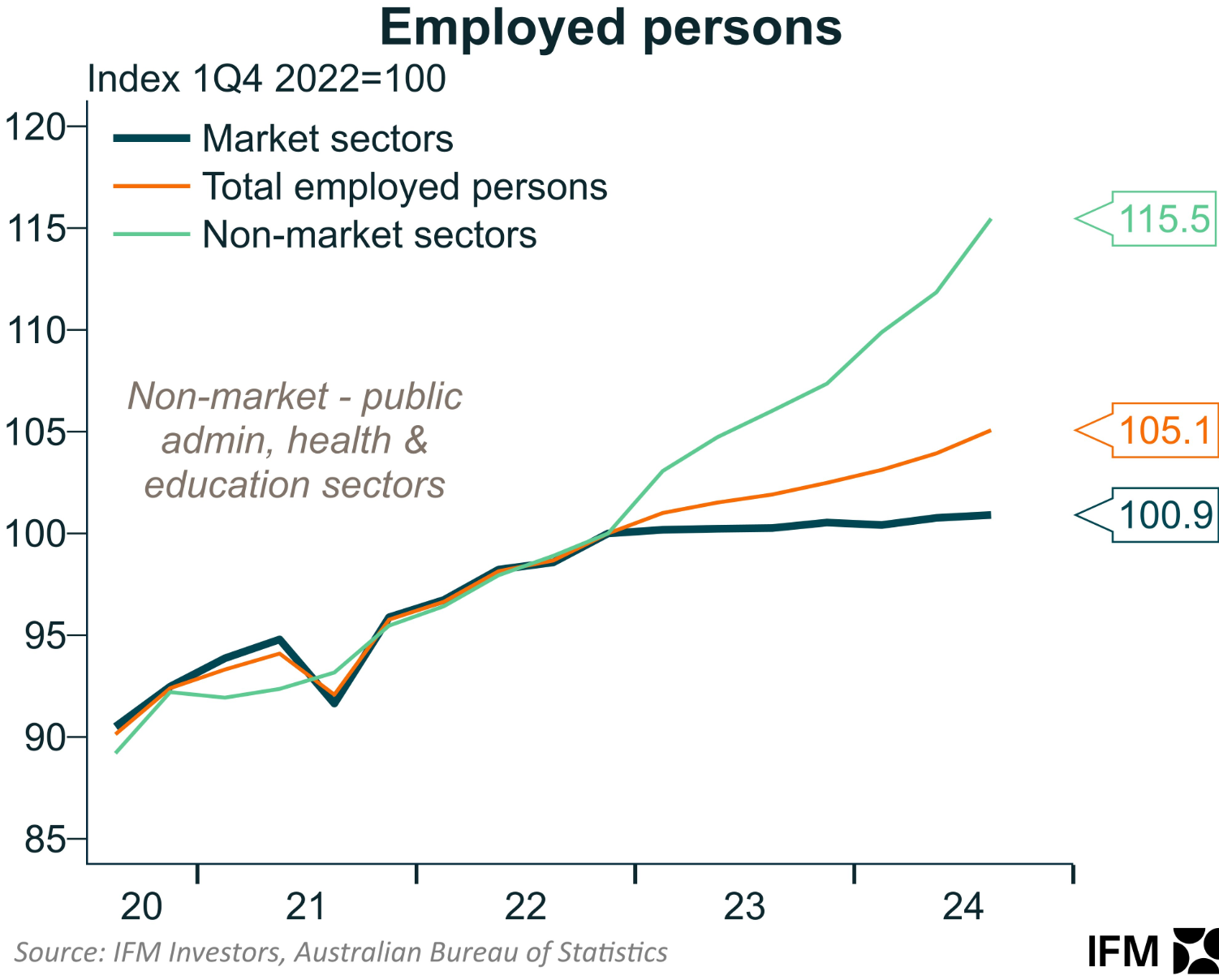
Indeed, government-aligned jobs have risen to a historic 29% share of total employment, increasing from approximately 23% in 2006.
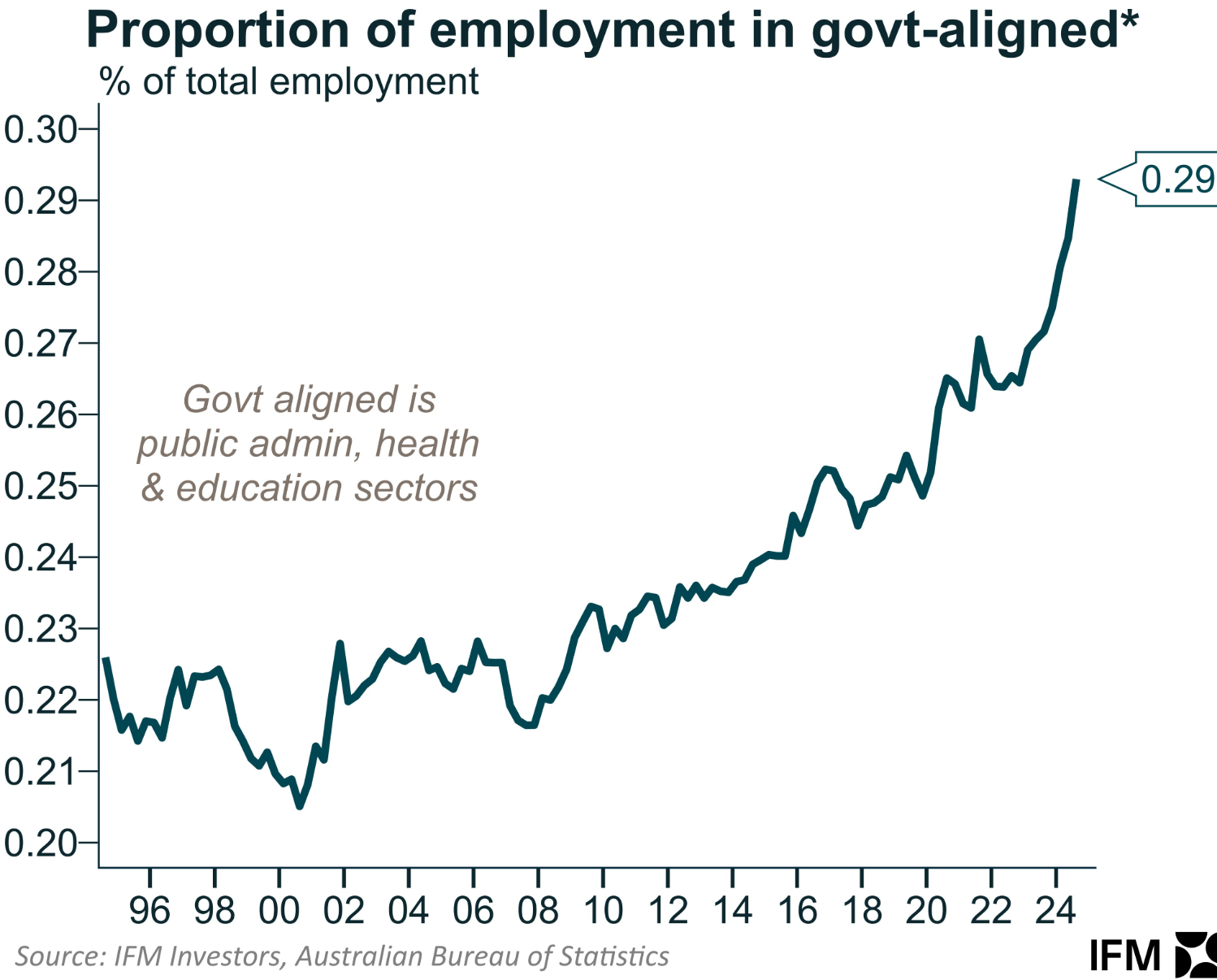
This expansion of non-market jobs has driven the recent decline in Australia’s labour productivity, which has fallen to 2016 levels.
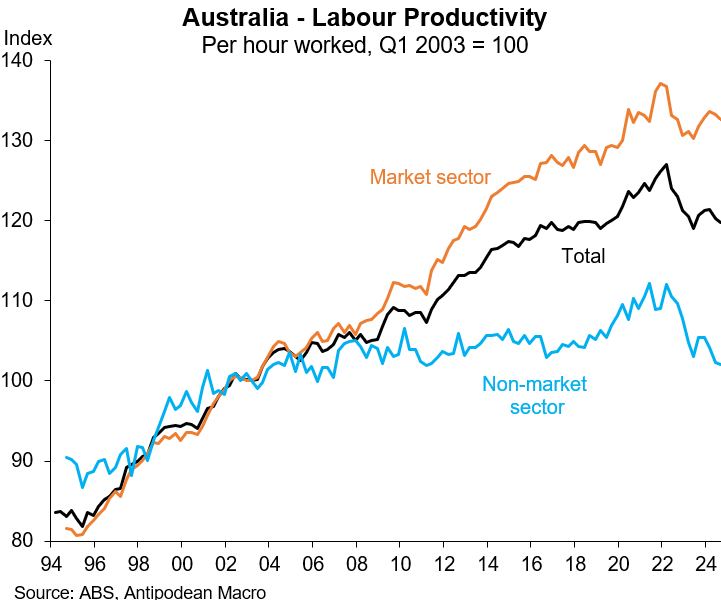
As you can see above, labour productivity in the non-market sector is tracking around the same level as 20 years ago.
The above helps to explain why Australia has experienced one of the largest declines in labour productivity in the developed world since 2018.
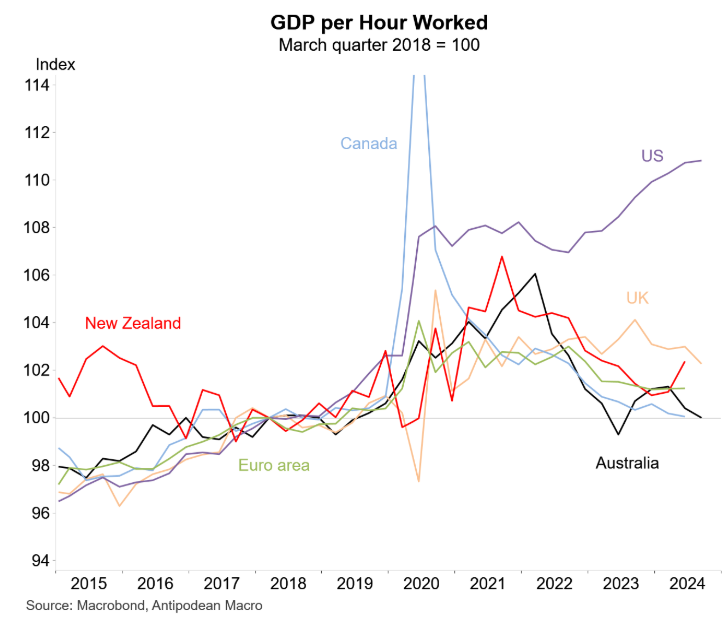
Australia’s living standards will continue to fall unless productivity growth increases.
However, it is difficult to see how productivity can recover as long as policymakers stay committed to mass immigration and continue to raise energy costs through failing gas policies and ‘net zero’ insanity, further deindustrialising the country.
